Blog & Latest Updates
Fly Fishing Articles
Insects by Common Name


Arthropod Class Insecta (Insects)
Taxonomic Navigation -?-
1 order isn't included.
Common Name
| Match | Common Name |
| Insects |
This site focuses on aquatic insects, of which the most important are mayflies (Ephemeroptera) and caddisflies (Trichoptera). Stoneflies (Plecoptera) come in third, a position arguably challenged by the many two-winged true flies of the Diptera order, which includes midges and craneflies. I've also included some terrestrial (Terrestrial: Insects which live on land and are fed on by trout only when they incidentally fall into the water are known as "terrestrials" to fly anglers, and they're very important in late summer.) insects which I've found on or near trout streams. Terrestrials (Terrestrial: Insects which live on land and are fed on by trout only when they incidentally fall into the water are known as "terrestrials" to fly anglers, and they're very important in late summer.) like ants, beetles, and grasshoppers are an important food source for trout in many places, especially during the summer months.
Aquatic insects do not live their entire lives in the water. Instead, they grow for a year (give or take quite a bit) as nymphs or larvae underwater, and then they emerge into air-breathing winged insects for a short while to mate and die. There are many variations on this theme.
The most important aquatic insects for fly fishermen are mayflies, stoneflies, caddisflies, and midges. Mayflies and caddisflies are the most discussed by angler-entomologists, because it's so useful to closely identify them. The behavior of their species guides the behavior of feeding trout, and an angler who understands the lifecycle of a particular species has the upper hand when it's hatching. This is not so important for stoneflies and midges, because their hatching behavior is less variable.
Pictures of 1229 Insect Specimens:
Baetisca obesa (Armored Mayfly) Mayfly Nymph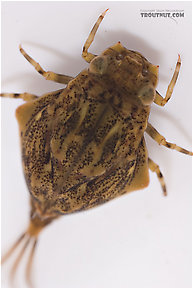 View 12 Pictures
View 12 Pictures
 View 12 Pictures
View 12 PicturesCollected May 6, 2007 from the Neversink River (above reservoir) in New York
Added to Troutnut.com by Troutnut on May 10, 2007
Added to Troutnut.com by Troutnut on May 10, 2007
Neophylax (Autumn Mottled Sedges) Caddisfly Adult View 20 PicturesThis large caddisfly looks really neat close-up.
View 20 PicturesThis large caddisfly looks really neat close-up.
 View 20 PicturesThis large caddisfly looks really neat close-up.
View 20 PicturesThis large caddisfly looks really neat close-up.Collected September 19, 2006 from Mystery Creek #43 in New York
Added to Troutnut.com by Troutnut on October 4, 2006
Added to Troutnut.com by Troutnut on October 4, 2006
Corydalus (Dobsonflies) Hellgrammite Larva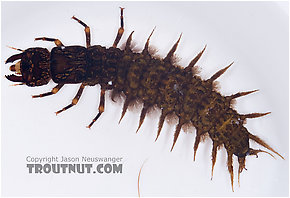 View 27 Pictures
View 27 Pictures
 View 27 Pictures
View 27 PicturesCollected May 29, 2007 from Paradise Creek in Pennsylvania
Added to Troutnut.com by Troutnut on June 4, 2007
Added to Troutnut.com by Troutnut on June 4, 2007
114 Underwater Pictures of Insects:
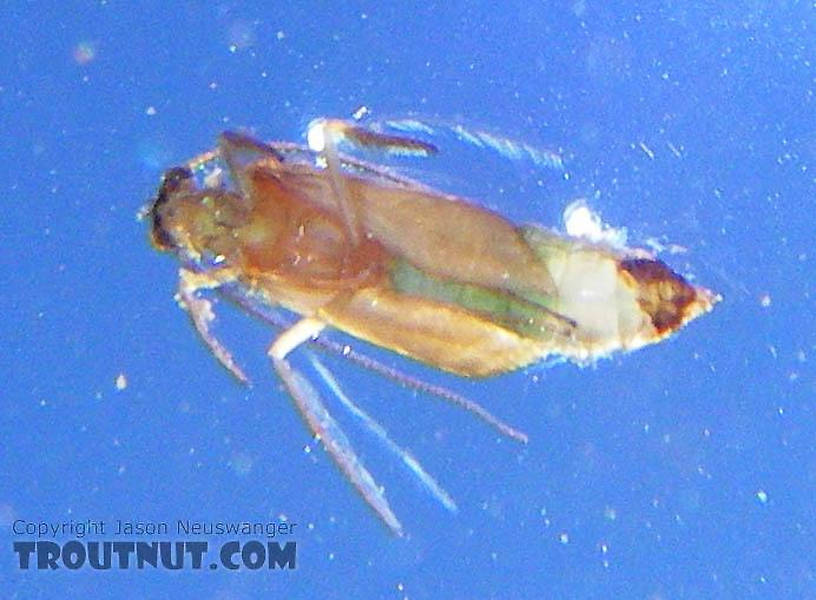
A Brachycentrus "Apple Caddis" pupa scoots around in the surface film. Apparently it had some difficulty emerging, so I was able to slip my camera underneath it and take a picture from below.
In this picture: Caddisfly Species Brachycentrus appalachia (Apple Caddis).
In this picture: Caddisfly Species Brachycentrus appalachia (Apple Caddis).
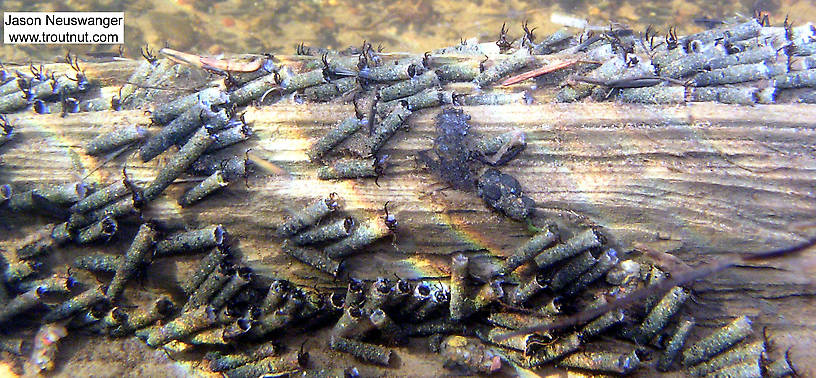
Hundreds of cased caddisfly larvae live on this log in a small brook trout stream.
In this picture: Insect Order Trichoptera (Caddisflies).
In this picture: Insect Order Trichoptera (Caddisflies).
StateWisconsin
LocationEighteenmile Creek
Date TakenApr 14, 2004
Date AddedJan 25, 2006
AuthorTroutnut
CameraOlympus C740UZ
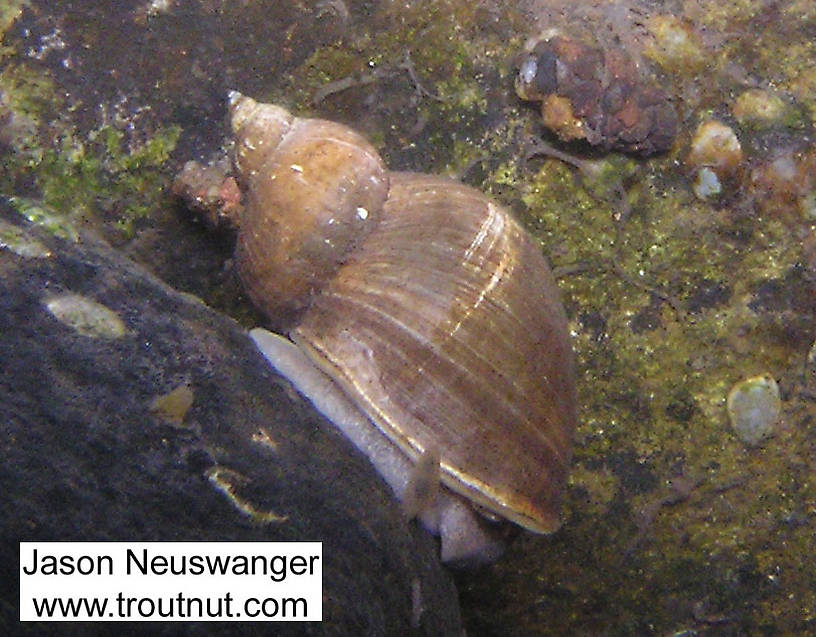
StateWisconsin
LocationNamekagon River
Date TakenMar 24, 2004
Date AddedJan 25, 2006
AuthorTroutnut
CameraOlympus C740UZ
Recent Discussions of Insecta
Missing genera (from missing list)
Latineosus, Sparbarus, Susperatus should all be included in the genera that aren't included (I think).
Andy
ReplyCorrect hatch time of year Hydropsyche slossonae? 10 Replies »Andy
Posted by AndyV on Aug 26, 2022 in the species Hydropsyche slossonae
Last reply on Oct 11, 2022 by AndyV
I've seen hatch charts (e.g. DNR hatch chart for SE MN) stating mid-May til the end of July vs June (from this site). Can anyone confirm?
Replyacentrella nymph 22 Replies »Posted by Goose on Nov 3, 2006 in the genus Acentrella
Last reply on Sep 15, 2022 by Wiflyfisher
Hi Jason! Do you have a picture of the (acentrella-miniature BWO nymph) on the site? I've been fishing them and wanted a better idea of how they look.
Thanks,
Bruce
ReplyFamily name now Thremmatidae (Little Northeastern Casemakers)Thanks,
Bruce
I believe Uenoidae is now known as Thremmatidae.
~Andy
ReplyPlectrocnemia missing~Andy
Posted by AndyV on Aug 25, 2022 in the family Polycentropodidae
I believe this is missing from the list. Unsure of it's importance. However, they was a study on Plectrocnemia conspersa relative to trout populations in Ashdown Forest streams [Schofield et al. (1988)].
ReplyThere are 3904 more topics.
Your Thoughts On Insecta:
Top 10 Fly Hatches
Top Gift Shop Designs
Eat mayflies.
Top Insect Specimens
Miscellaneous Sites
Troutnut.com is copyright © 2004-2024 Jason
Neuswanger (email Jason). See my FAQ for information about use of my images.
 privacy policy
privacy policy
